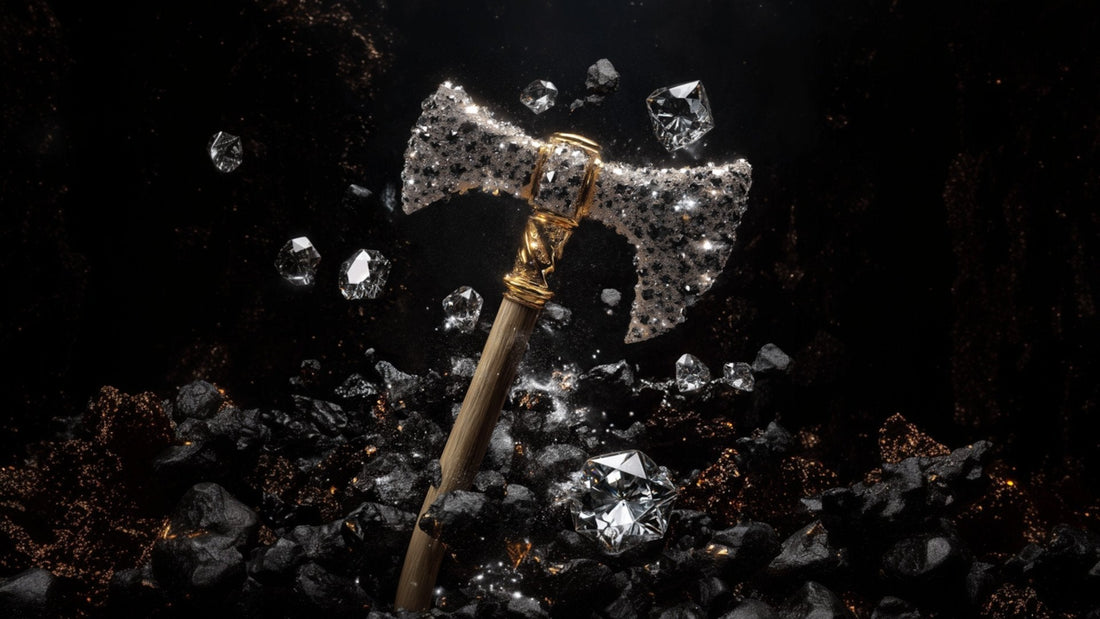
War Of The Diamonds : GIA’s New Lab Grown Diamond Rules Spark Industry Backlash
Share
On June 2, 2025, the Gemological Institute of America (GIA) announced a major change to how it grades lab grown diamonds — a move many in the jewellery trade see as another salvo in the long-running battle between natural diamonds and lab grown diamonds.
Later this year, GIA will stop grading lab grown diamonds using the same colour and clarity scale as natural diamonds. Instead, it will issue only two broad categories: “Premium” or “Standard.” Lab grown diamonds falling below “Standard” will receive no certificate at all.
“This revision will help consumers understand the important differences in the two products’ origin, ensuring their confidence and enabling them to make informed and educated purchase decisions,”
— GIA statement, via National Jeweler magazine
But will less information really help customers make informed choices? Many in the trade believe the opposite.
Industry Reaction: “A Feeble Attempt to Put the Genie Back in the Bottle”
Jeffrey Mann, President of Jeffrey Mann Fine Jewelers (Ohio), was blunt in his LinkedIn response:
“GIA’s decision to differentiate grading systems between mined and lab grown based on quantity of lab production is baseless, meritless and biase. Furthermore, it’s outside of GIA’s role as an educational institution. It’s obvious that GIA has caved to pressure from the mined diamond industry.”
The removal of a like-for-like grading system reduces transparency for buyers.
By no longer using the same colour and clarity standards for both natural and lab grown diamonds, the GIA has eliminated a straightforward way for consumers, retailers, and anyone without professional diamond-grading skills to make an informed comparison. Supporters of the change say it highlights the difference in origin between the two products — but critics argue it takes away objective, comparable information that buyers rely on when making high-value decisions.
The Bigger Battle: Lab Grown Diamonds Disrupt a Billion-Dollar Industry
I’ve written before about the natural diamond sector’s resistance to lab grown gems — in 2022, and again in 2024, when I noted that lab diamonds were continuing to pose a real threat to mined diamonds.
That threat has only intensified. After the pandemic lockdowns in 2020, natural diamond sales surged — but the boom was short-lived. The rapid rise of lab grown diamonds has since reshaped the market so dramatically that no one has stepped forward to acquire De Beers, the world’s second-largest diamond miner with 29% global market share. For more than a year, one of the most powerful and historically influential players in the industry has been up for sale — a situation that would have been unimaginable just five years ago.
De Beers Shuts Down Lightbox
In May 2025, De Beers announced the closure of Lightbox, its lab grown diamond retail arm, created in 2018 to try to devalue lab grown gems by positioning them as inexpensive, fashion-only items — akin to cubic zirconia.
“De Beers thought that consumers would think the same way they did — that lab-grown wasn’t a competitor [to natural], that it wasn’t made for bridal. That turned out to be all wrong.”
— JCK Magazine interview with a Lightbox executive
Consumers do want lab grown diamonds for engagement rings, wedding jewellery, and heirloom-quality pieces.
Element Six, De Beers’ sister company, will continue producing lab grown diamonds — but only for industrial and high-tech applications.
The New Luxury: Value, Meaning, and Experience
Here’s what the old-guard luxury market misunderstood:
Luxury is no longer defined by price tags.
Consumers now value meaningful experiences and personal connection over prestige.
They want to feel valued, not just sold to.
Affordable luxury isn’t an oxymoron — it’s the new reality. The internet has given customers power, and brands that listen will win over those that dictate.
Retail vs. Industry Gatekeepers
Martin Rapaport, a prominent diamond industry figure, has long refused to list lab grown diamonds on his pricing platform (the Rap List). He appeared in the Netflix documentary Nothing Lasts Forever, and now publicly shames jewellers for selling them.
But jewellers like Matthew Gabel of MJ Gabel (New York) say that reality is different:
“For every natural diamond we sell, ten customers specifically ask for lab grown diamonds.”
Ignoring that demand, Gabel says, would mean failing as a business.
Why GIA’s Move Might Backfire
The GIA is not the only authority on diamond certification. Other labs, like the International Gemological Institute (IGI), still offer full colour and clarity grading for lab grown diamonds.
If GIA refuses to provide like-for-like certificates, it risks making itself irrelevant to a growing segment of the diamond market.
Conflict Free? The Irony
The term conflict-free diamond has long been used to promote ethically mined gems. But with the growing popularity of lab grown diamonds — which avoid the environmental and humanitarian issues of mining — the phrase takes on a whole new meaning.
This latest GIA decision is just another twist in the evolving war of the diamonds — and the battle is far from over.
